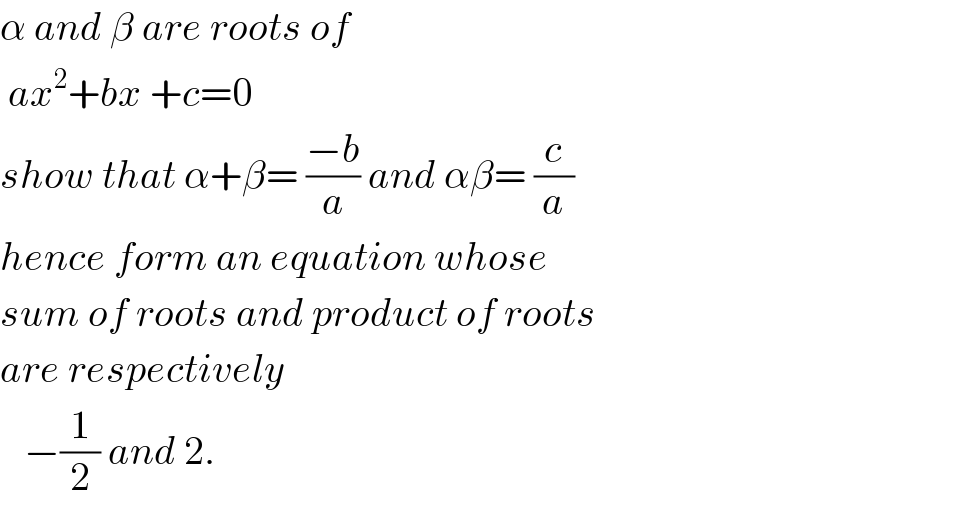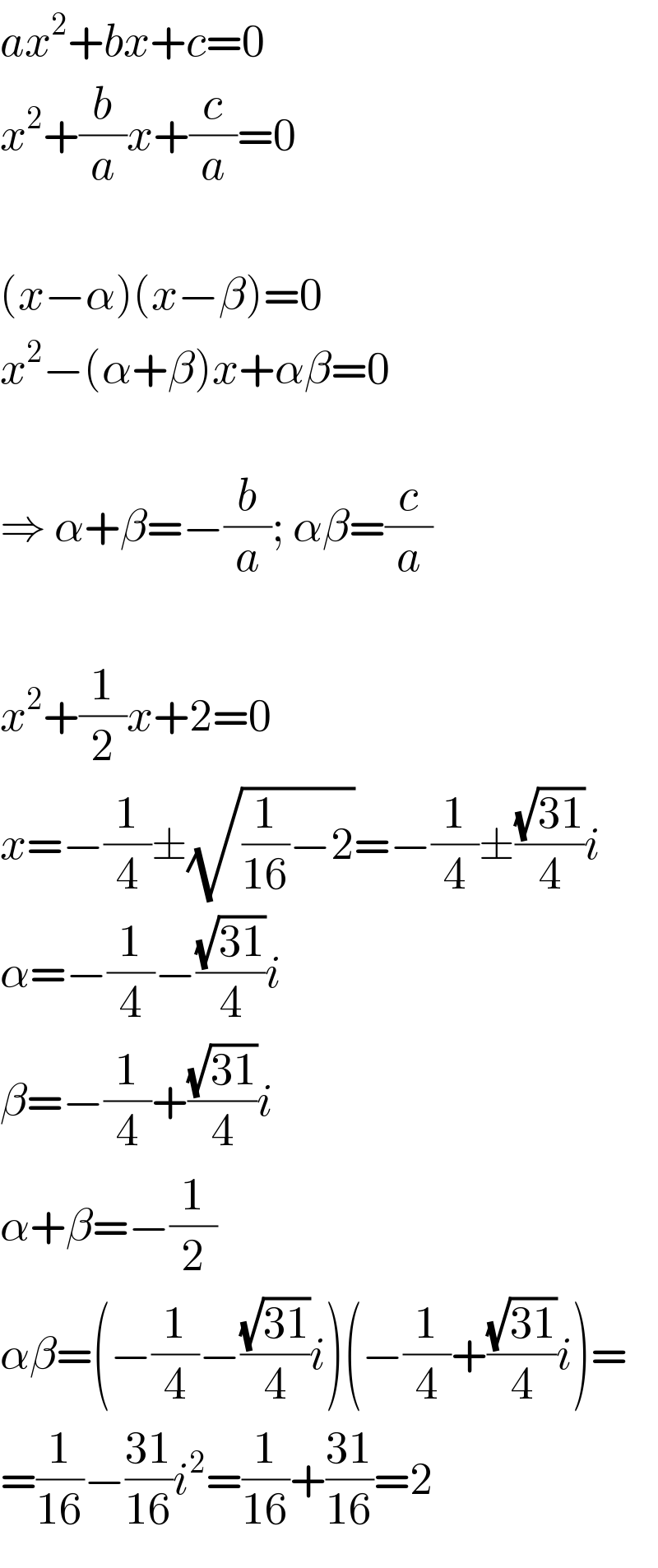
Question and Answers Forum
Question Number 33139 by Rio Mike last updated on 11/Apr/18

Answered by MJS last updated on 11/Apr/18

Commented by Rio Mike last updated on 11/Apr/18

| ||
Question and Answers Forum | ||
Question Number 33139 by Rio Mike last updated on 11/Apr/18 | ||
 | ||
Answered by MJS last updated on 11/Apr/18 | ||
 | ||
| ||
Commented by Rio Mike last updated on 11/Apr/18 | ||
 | ||